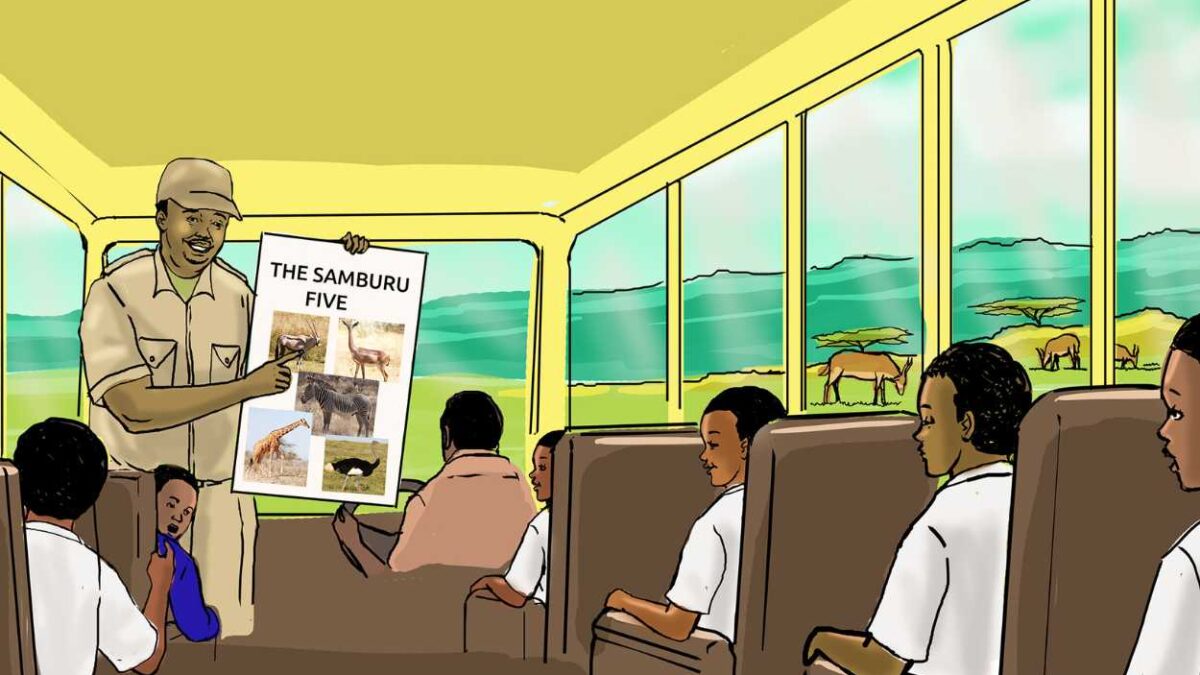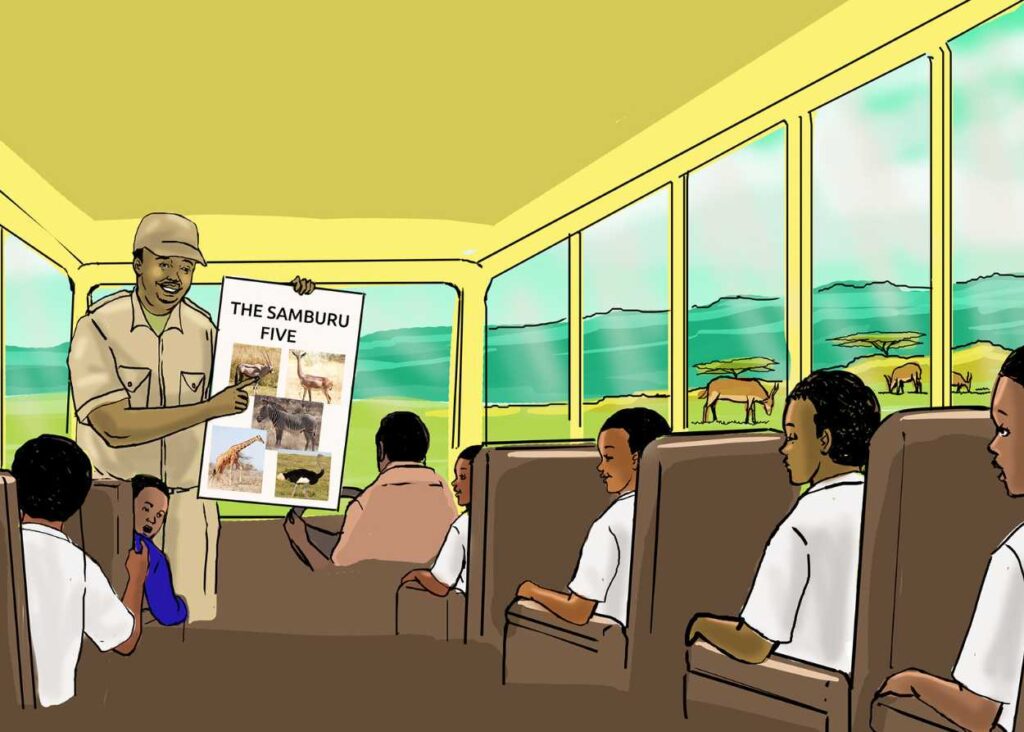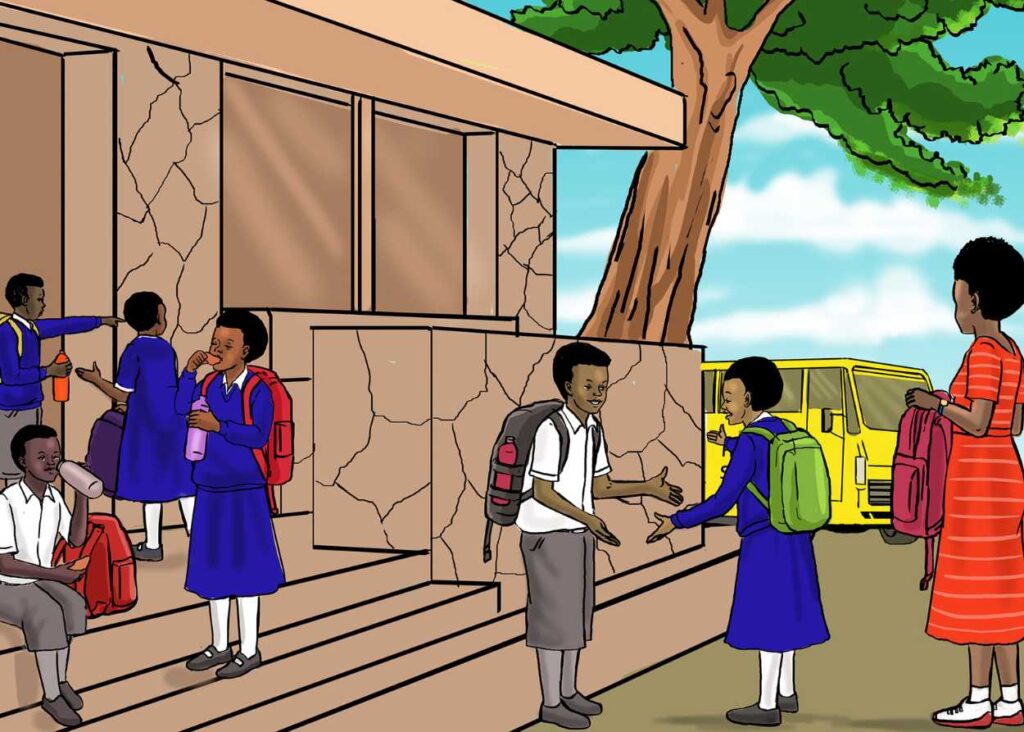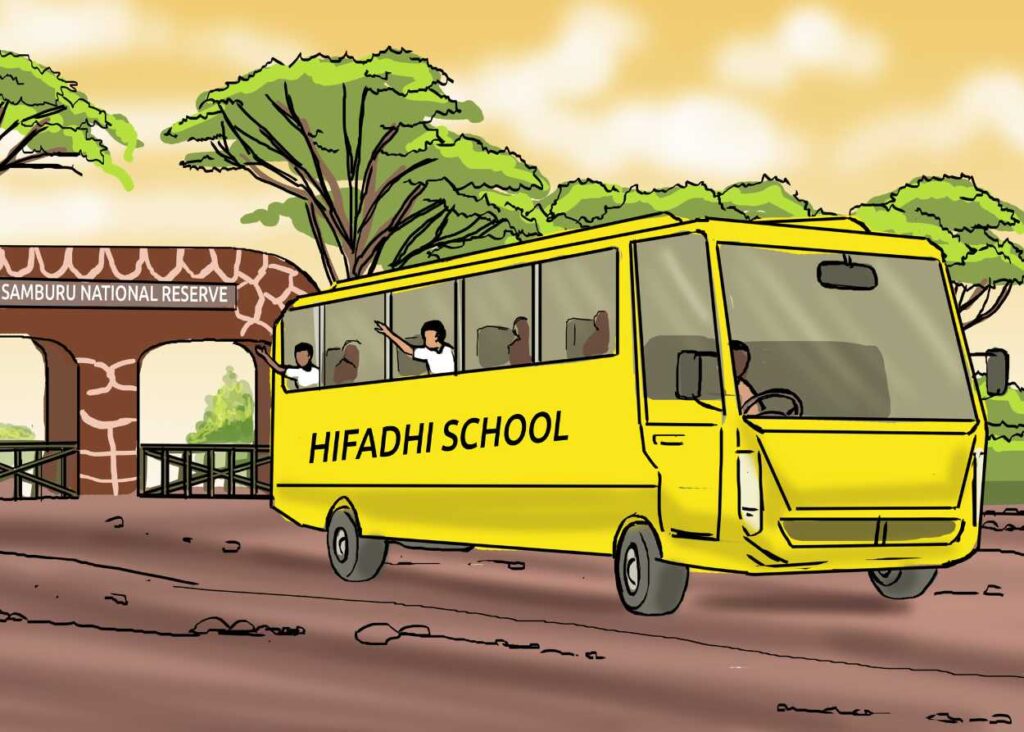The Samburu Five


It was a cold morning, and we huddled together chatting animatedly. A few of us were drinking hot tea as we waited to board our big yellow school bus. We had all been anticipating this class trip to the Samburu National Reserve.
“Hello children,” Ms. Zawadi, our class teacher, waves as she approaches us. “This is Mr. Layieni and he comes from Samburu and he will be our driver today.” She gestures to the tall dark man walking behind her.
We then board the big yellow school bus that is parked at the assembly ground.
Once in, our second teacher accompanying us, Mrs. Malasin asks everyone to fasten their seatbelts and she checks that they are secured correctly.
“Okay Mr Layieni, we can go now.” Mrs. Malasin says as she sits in her seat and fastens her seatbelt.

As Mr. Layieini manoeuvres the bus onto the road, I ask my friend Makena to lead us in a song.
………If you are happy and you know it, clap your hands… ♬ ♫♬ ♫
On and on we go with the singing. Before long, we are in Samburu.
The bus slows down to our first stop and Mrs. Malasin stands up.
“Way over there, is Mount Oloolookwea, which means `flat topped mountain’,” she explains.
I always thought mountains were pointy, but Mount Oloolookwea was flat at the top. What a majestic mountain!
“Women in Samburu used to go up the mountain and pray to Enkai which means God for rain when there were long seasons of drought.” Mrs Malasin continues, earning a chorus of oohhs from us.
These must have been very strong women; I have a hard time climbing stairs at school!
Mrs. Malasin retakes her seat, and the driver continues to the next stop.
A short while later, we are at a huge gate whose walls look like the pattern on giraffes. This is our main destination… The Samburu National Reserve.
We go ahead and disembark from the bus and are met by a tour guide that introduces himself to us as Mr. Kimani.
“Hi kids and welcome to the Samburu National Reserve!” he exclaims excitedly.
The name Samburu is not just the name of the county, it is also the name of the largest community in this county. The Samburu are cousins to the Maasai, but they have a different language, tradition, and culture. Some people say that long ago they used to be Maasai, but they separated and formed a new identity.
“Did you know that most of the photos used to show Kenya as the home of the Maasai are the Samburu people?” Mr Kimani asks.
We all gasp in unison.
It makes me wonder if my beaded bracelet is a Maasai bracelet or a Samburu bracelet.
“Are we going to meet Samburu people here?” Juma asks Mr Kimani as we reboard the bus for the tour to begin.
“Not really, because we are in a park. We need to stay in the bus due to wild animals. But you might get to see them dance on your way out if we are not late.” Mr Kimani says.
“However, you will get to see the five special wildlife of Samburu. Like Kenya’s big five, Samburu National Reserve has The Samburu Five. The Generuk antelope, Grevy’s Zebra, Reticulated Giraffe, the Beisa Oryx and the Somali Ostrich.” Mr Kimani says.
“Let us start with the Reticulated Giraffe. Our park gate is painted in the pattern of the reticulated giraffe’s appearance. Reticulated means lines forming a web. This giraffe has some regular box patterns and very clear lines, almost like a math book. It is very different from the other giraffes whose pattern looks like spots.” Mr Kimani says.
“I see two!” Musa shouts from the back of the bus making everyone turn to see where he was pointing at.
The giraffes are so tall, and their pattern looks perfect, it makes me feel like the giraffes knew we would come so they put on their best clothes.
“What’s that other long necked animal?” Kemunto asks pointing at a bush
There was an animal standing still behind a bush and looking directly at us
“That is the Gerenuk, a graceful antelope” Mr Kimani says and just then, the Gerenuk stepped out of the bush.
This antelope was so beautiful from its head to its hooves.
We left the two long necked animals behind and kept going when the bus stops, for the Zebras to cross the road.
“These are the Grevy’s zebras, they stand out for their very thin razor-like stripes. Does anyone know if zebras are white with black stripes or black with white stripes?” Mr Kimani asks.
“Are they just not black and white?” Atiye asks.
“Zebras are black under their fur, the white stripes are because of lack of pigment, making them black with white stripes.” Mr Kimani answers.

“Mr Kimani, how do we spell oh-ricks?” Musa asks.
“O-r-y-x, and there is one,” Mrs. Masalani responds pointing out of the window.
A brown animal with very long and sharp pointed horns is eating grass. The top part of its legs is black and the bottom white. It also has a black tail and black stripes on its face. Another Oryx appears and they start fighting, a lot of dust rises in the air. We all start being loud, and this seems to scare the animals who suddenly stop and run away.
“The Oryx is also a type of antelope,” Mr Kimani says as we watch the two animals run away.
We drive for a while not seeing anything new.
“There is an ostrich on the left side of the road,” our driver Mr Layieni says.
We all turned to look and the first thing that came to my mind was my grandmother’s chicken without feathers on their necks, but a bigger version.
The ground seems to shake when the ostrich walks.
“Here is our last animal of the Samburu Five, the Somali Ostrich also called the blue necked ostrich because its neck is blue. The ostrich is the only known bird that cannot fly, but it can run very fast.” Mr Kimani says.
I used to wonder why ostriches can’t fly, seeing one in real life made me see that it was maybe too heavy to fly.
We keep driving around the park just admiring the trees and view of Mount Oloolookwea which is better from the park.



